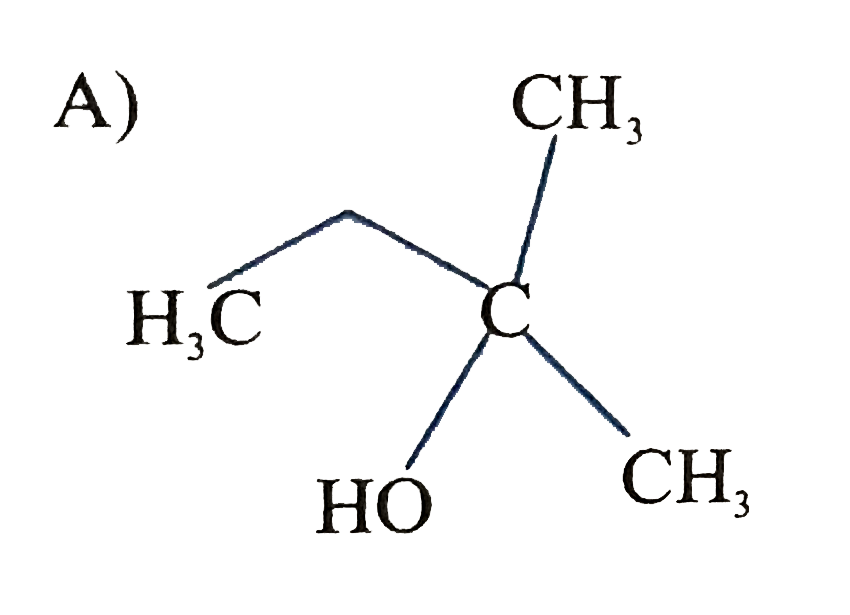For selective hydrogenation of alkynes into alkene the catalyst used is
Ni at 250∘ C
Pt at 25∘C
Pd, partially inactivated by quinoline
Raney nickel
The correct Answer is:C
Topper's Solved these Questions
- SURFACE CHEMISTRY BOOK - SURA PUBLICATIONCHAPTER - SURFACE CHEMISTRY EXERCISE - SHORT ANSWER QUESTIONS
25 Videos
- SURFACE CHEMISTRY BOOK - SURA PUBLICATIONCHAPTER - SURFACE CHEMISTRY EXERCISE - FILL IN THE BLANKS
36 Videos
- SOLID STATEBOOK - SURA PUBLICATIONCHAPTER - SOLID STATEEXERCISE - ANSWER IN PARAGRAPH
2 Videos
- TRANSITION AND INNER TRANSITION ELEMENTSBOOK - SURA PUBLICATIONCHAPTER - TRANSITION AND INNER TRANSITION ELEMENTSEXERCISE - Value Based Question
1 Videos
Similar Questions
Knowledge Check
Hydrogenation of alkenes and alkynes takes place in presence of certain catalysts. In Sabatier Senderen's reaction, the addition of hydrogen takes place I presence of Raney nickel catalyst. Platininm and palladium can also be used as catalyst and used in finley divided state. Experimentally, it is observed that less crowded alkenes adsorb H2 with faster rate. Controlled hydrogenation of alkyne H2 with faster rate. Controlled hydrogenation of alkyne in presence of Lindlar's catalyst yields cis product i.e., 'cis' alkene. Thus, in presence of Lindlar's catalyst 'syn' addition takes place. The relative rate of hydrogenation follows the order:

Non-terminal alkynes are reduced in presence of Na or Li metal dissolved in liquid ammonia. In this reaction, anti-addition of hydrogen results into the trans-product.
Answer the following questions:
The relative rate of catalytic hydrogenation of following alkenes is:
 AIIgtIIIgtIVgtIBIgtIVgtIIIgtIICIIIgtIVgtIgtIIDIIgtIVgtIgtIII
AIIgtIIIgtIVgtIBIgtIVgtIIIgtIICIIIgtIVgtIgtIIDIIgtIVgtIgtIIIHydrogenation of alkenes and alkynes takes place in presence of certain catalysts. In sabatier-Senderen's reaction, the addition of hydrongen taken place in presence of nickel catalyst. Controlled hydrogenation of alkyne in presence of Lindlar's catalyst gives cis-alkene. Non terminal alkynes are reduced by Na or Li metal dissolved in liquid NH3. In this reaction trans alkenes are formed.
Q. In which of the following the reaction is most exothermicA B
B C
C D
D
Hydrogenation of alkenes and alkynes takes place in presence of certain catalysts. In sabatier-Senderen's reaction, the addition of hydrongen taken place in presence of nickel catalyst. Controlled hydrogenation of alkyne in presence of Lindlar's catalyst gives cis-alkene. Non terminal alkynes are reduced by Na or Li metal dissolved in liquid NH3. In this reaction trans alkenes are formed.
Q. The product of the following reaction is
 A
A B
B C
C D
D
Reduction of an alkyne to the double bond stage can yield a cis alkene or trans alkene (except in cases where triple bond is at the end of the chain ) Reduction of alknes with sodium or lithium in liquid NH3 yields predominantly trans alkene.

Hydrogenation of alkynes with Lindlar's catalyst or a nickel boride called P2 catalyst yeilds is alkene (as high as 98%)

If Pd/C/H2 is used in the absence of a catalyst poison, two equivlanet of H2 are added forming alkanes.

Select the correct statement(s)
View SolutionReduction of an alkyne to the double bond stage can yield a cis alkene or trans alkene (except in cases where triple bond is at the end of the chain ) Reduction of alknes with sodium or lithium in liquid NH3 yields predominantly trans alkene.

Hydrogenation of alkynes with Lindlar's catalyst or a nickel boride called P2 catalyst yeilds is alkene (as high as 98%)

If Pd/C/H2 is used in the absence of a catalyst poison, two equivlanet of H2 are added forming alkanes.
Reduction of alkynes to trans alkene by Li/NH3 is carried out in the presence of dry ice. This is because of
View SolutionReduction of an alkyne to the double bond stage can yield a cis alkene or trans alkene (except in cases where triple bond is at the end of the chain ) Reduction of alknes with sodium or lithium in liquid NH3 yields predominantly trans alkene.

Hydrogenation of alkynes with Lindlar's catalyst or a nickel boride called P2 catalyst yeilds is alkene (as high as 98%)

If Pd/C/H2 is used in the absence of a catalyst poison, two equivlanet of H2 are added forming alkanes.
Lindlar's catalyst can be prepared in precipitating palladium calcium carbonate and treating it with lead acetate or quinoline. This treatement is
View SolutionReduction of an alkyne to the double bond stage can yield a cis alkene or trans alkene (except in cases where triple bond is at the end of the chain ) Reduction of alknes with sodium or lithium in liquid NH3 yields predominantly trans alkene.

Hydrogenation of alkynes with Lindlar's catalyst or a nickel boride called P2 catalyst yeilds is alkene (as high as 98%)

If Pd/C/H2 is used in the absence of a catalyst poison, two equivlanet of H2 are added forming alkanes.
Shown below is the first step in hte synthesis of hte important perfume constituent, cis-Jasmone which reagents you choose to carry out this last step?

View SolutionFor the conversion of alkyne to cis-alkene, H2+ Lindlar's catalyst is used:

Which of the statements are wrong:
View Solution
